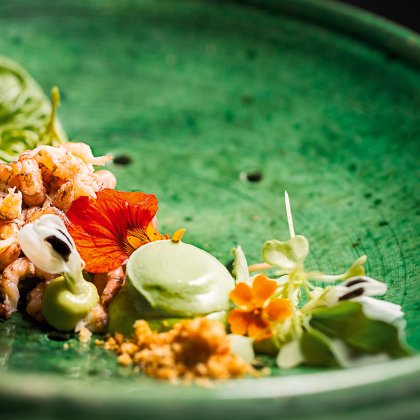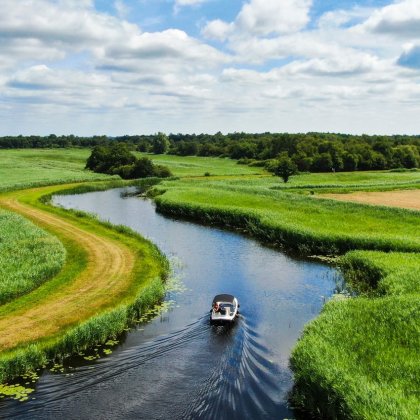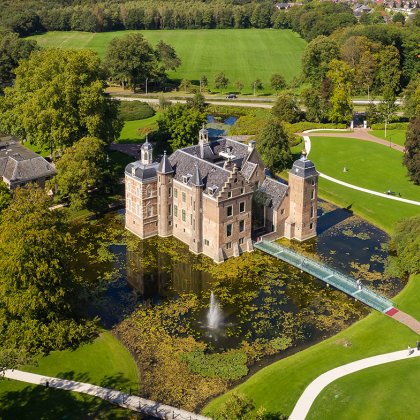The Netherlands, the land of flowers
If you’re lucky and your plane lands on the Kaagbaan runway at Amsterdam Schiphol Airport, your initial view will confirm that the Netherlands is indeed the land of flowers. Even the Eiffel Tower can’t compete with the millions of lights blinking along the endless rows of flower greenhouses, resembling brilliant glass cities. You could get even luckier and catch a glimpse of the colorful patchwork fields made up of tulips, crocuses, dahlias and gladiolas.
A magical moment: Love is in the air; this is the Netherlands.
What happens in that little country barely measuring 42,000 km2, is extraordinary. The Netherlands produces 1.7 billion cut flowers per year, which represents roughly 60% of global trade and makes it the Silicon Valley of the flower industry.
The Pope expresses his gratitude to the Netherlands for decorating Saint Peter’s Square with flowers every year, and many of the 20 million foreign tourists will do anything to get that coveted selfie in a flower field. Their enthusiasm sometimes makes the flower growers grumble because they have to deploy ambassadors to protect their valuable product and keep the visitors from trampling their flowers. Look but please don’t touch.
Enjoying Dutch flowers is not an activity limited to spring. There are places to visit and flowers to admire in every season. Let the Dutch flower story inspire you.
Flower bulb fields & sheds
Van den Berg grew up surrounded by flower-bulb fields, with frogs croaking and birds singing. She remembers being happy. “In these flower bulb sheds, my father and his neighbors talked about their small parcels of private land intersected by ditches. They always discussed the weather. Whether they could plant or dig up the bulbs or harvest the flowers. They looked up at the sky and knew what weather was coming.”
The entire family took care of the flower bulbs. Says Dorien: “During school lunch breaks, I went home to help my father cut back the irises or count cut flowers. We ate a hot lunch, my grandfather at one end of the table and my father at the other. Traditional and safe.”
Dorien chose to travel around the world. As a flower stylist, she decorated palaces for Middle Eastern sheiks, arranged flowers for weddings in Japan, and taught in Lebanon. Always using Dutch flowers, naturally. The Netherlands was proud when she was invited as a guest on Martha Stewart’s American TV show, where she talked about the beauty of Dutch lilies as “Miss Lily”.
Although she lived like a diva, she retained her practical Dutch attitude. The stylist changed traditional methods, for instance the structure of a bouquet of lilies. While these used to be stuck into floral foam in a white pot, Dorien arranged the stems in large, glass vases with LED lighting. Her floral shapes became popular. “I work with nature but use modern techniques.” She always feels at ease around flowers.
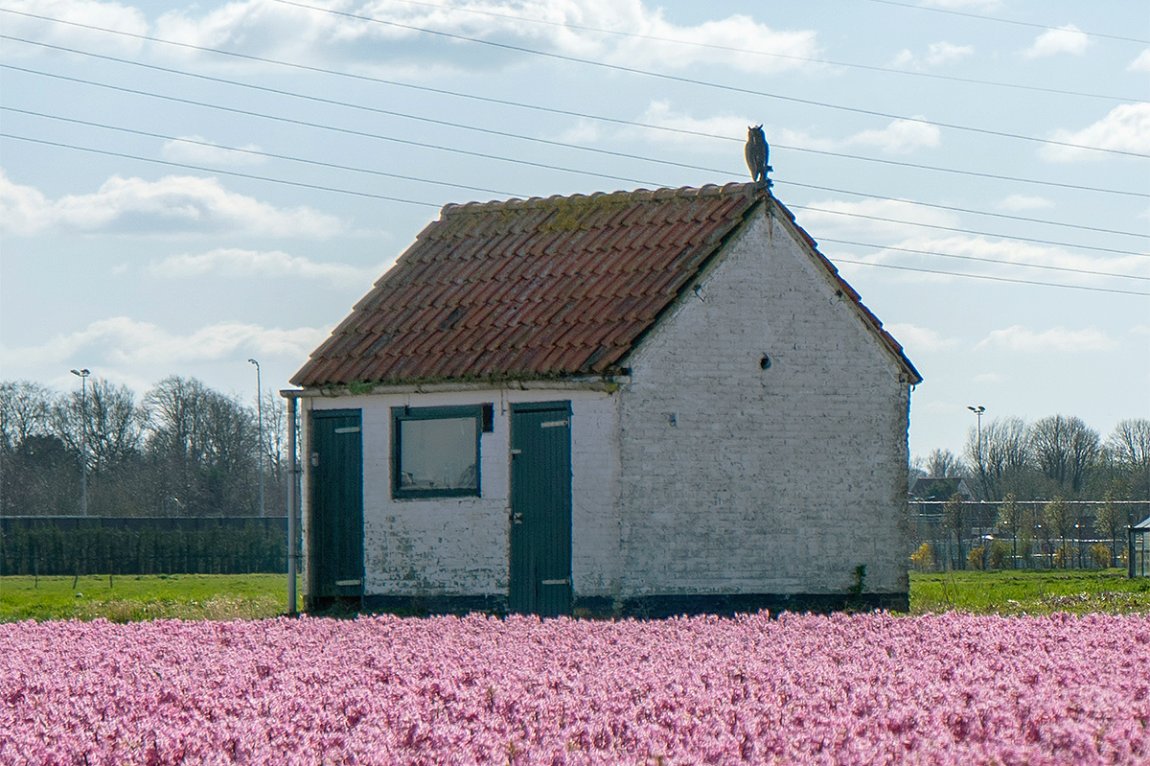
Flower bulb sheds are an industrial heritage
Due to the increased scale of flower bulb companies, no more than about 400 out of 1500 flower bulb sheds remain. They have become Dutch industrial heritage property. Some consider the sheds to be a blight on the landscape while others believe the sheds, with their individual personality, are characteristic of the flower bulb region. You can’t visit them but when you tour the flower bulb region, you are sure to find one to admire from afar.
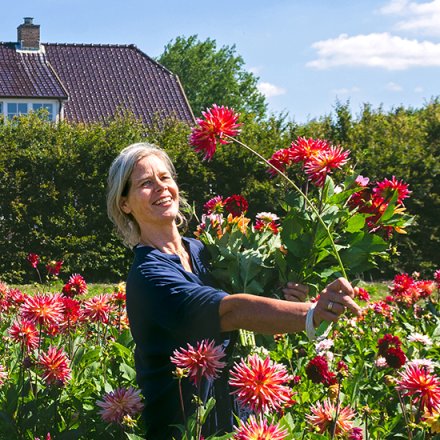
“Rent a bicycle, choose an itinerary, and enjoy the colorful landscape with its authentic flower bulb sheds. Order a drink and a snack at Como & Co overlooking Oosterduinse Meer lake near Noordwijkerhout. Or head out to Appeltern’s gardens near Nijmegen for incredible inspiration. The daring types can stop by the herring stand across the street from the Reformed Church in Noordwijk (from March 1st through November 1st).
P.S.: I eat them without onions.”
The world behind flower bulbs
All flowers stem from the flower bulb fields before they are cut, taken to the auction house, and end up at the flower shop. A lot of work has been done before a bulb is planted into the soil to flower. Many growers have a lab where they improve flowers. This means that they combine seeds and/or pollen to create stronger flowers that are more resistant to diseases and pests or that will become hits due to a fantastic new color, scent or shape.
Cross pollination at the lab
It’s not as easy as it sounds. Obtaining a new variety without losing the original’s positive traits is like a game of poker. It may take up to twenty years to cultivate a new tulip variety. Laboratories are generally shrouded in secrecy and discoveries result in huge excitement, picking a name for the new variety and ensuring its official registration. The names are imaginative and include Lingerie, Triple A, Heartbreaker, and Og3NE.
When will you come and admire the Dutch flowers?
-
Our tip for 'Autumn'
Imagine yourself in the tropics and discover thousands of enchanting and unusual flowers.
Read more -
Our tip for 'Winter'
-
Our tip for 'Spring'
-
Our tip for 'Summer'
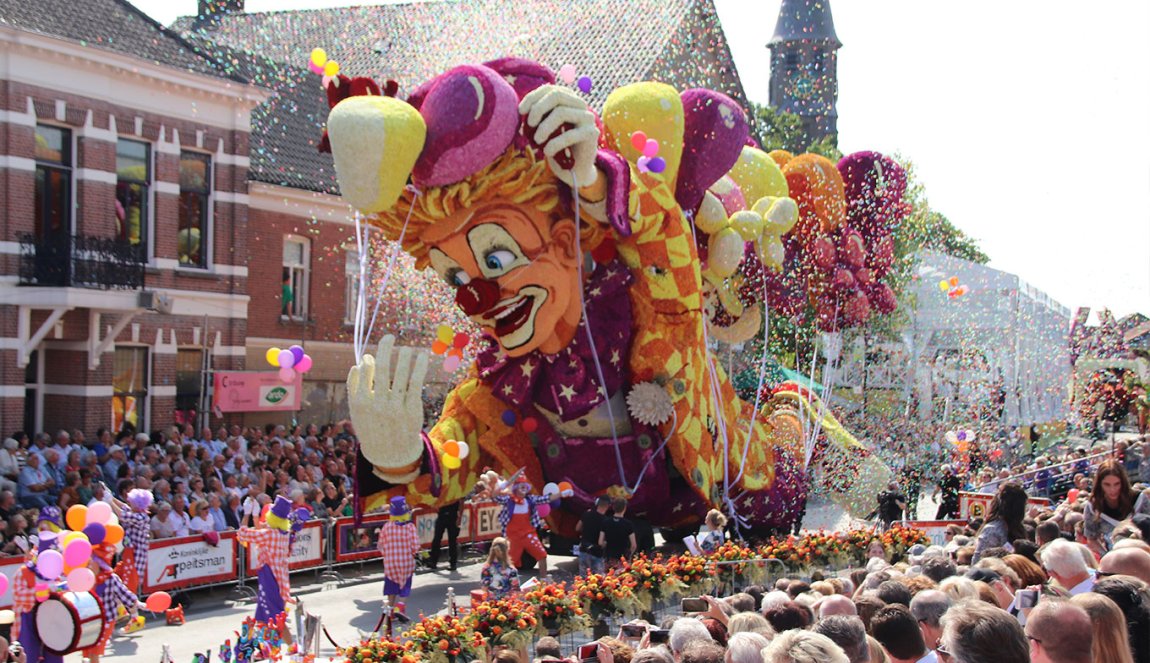 © Erwin MartensCategory: Read
© Erwin MartensCategory: ReadFlower ‘corsos’: A colorful tradition
Read about the spectacular Dutch tradition of flower parades.
Bulbs love the Dutch weather
The most well-known flower bulb ‘sanctuaries’ in the Netherlands can be found in the region south of Amsterdam, in the uppermost part of the province of North Holland, and in a section of the province of Flevoland. This is where tulips, crocuses, daffodils and hyacinths flower from the end of March through the end of May. In summer, they make way for gladiolas, dahlias, carnations, and asters. In other words, tourists can enjoy the view throughout the year.
The reason why flowers flourish here more than in, for instance, the south of the Netherlands is a mysterious combination of acidity, sea air and sand, among other things. In short, the sand dunes by the sea were used to build chic mansions for rich merchants who lived inland over four centuries ago. A gorgeous mansion obviously needed beautiful flowers. The excavated dune soil on which peat had grown was found to be the perfect breeding ground for tulips, daffodils, crocuses, and other flowers.
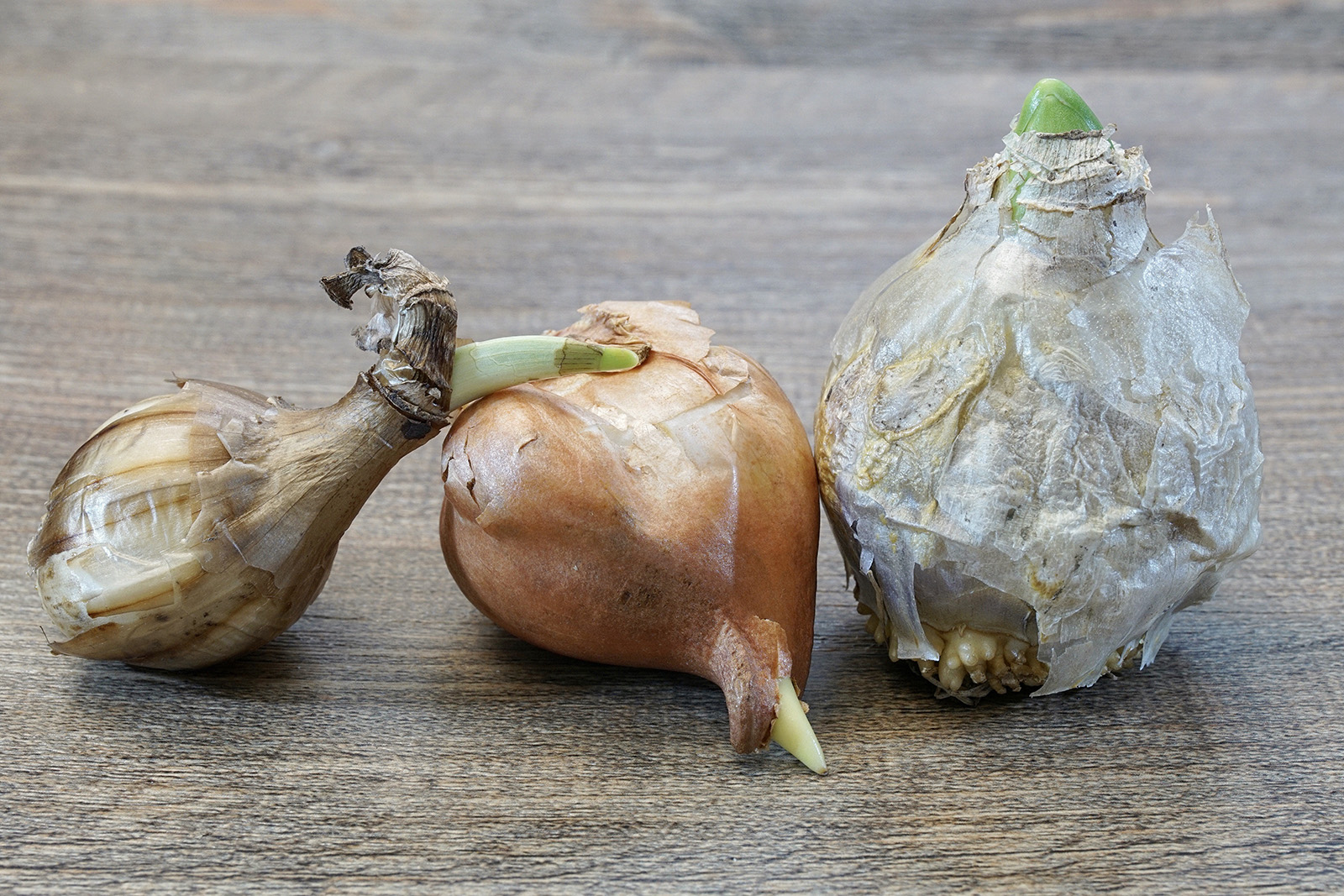
Different types of bulbs
Every type of flower bulb looks different. It is always exciting to see how the most beautiful flowers emerge in a variety of colors from these tiny bulbs.
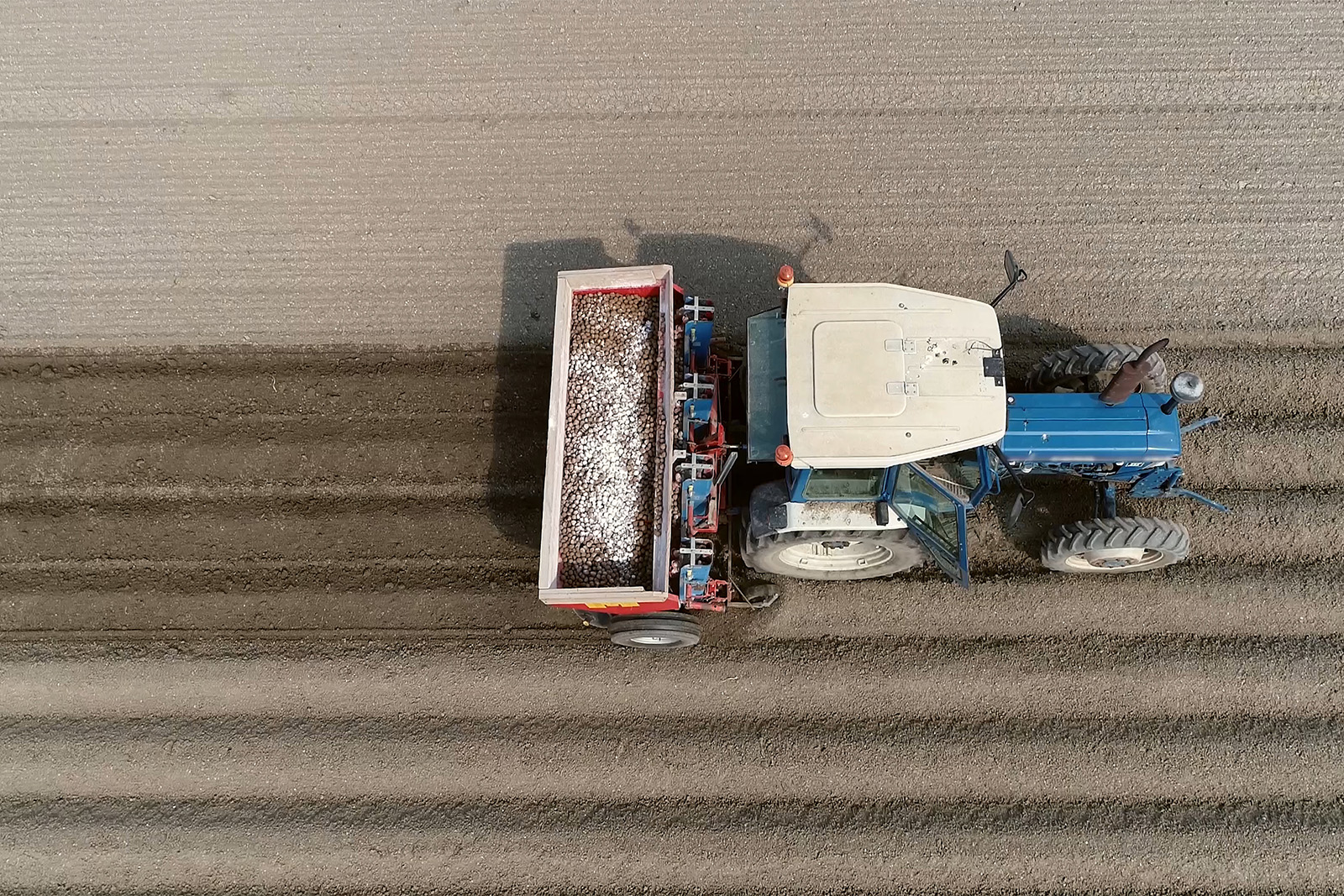
A tulip field: the beginning
In fall, the new bulbs are planted in the soil so they will flower in spring. Fortunately farmers don't have to plant them by hand anymore!
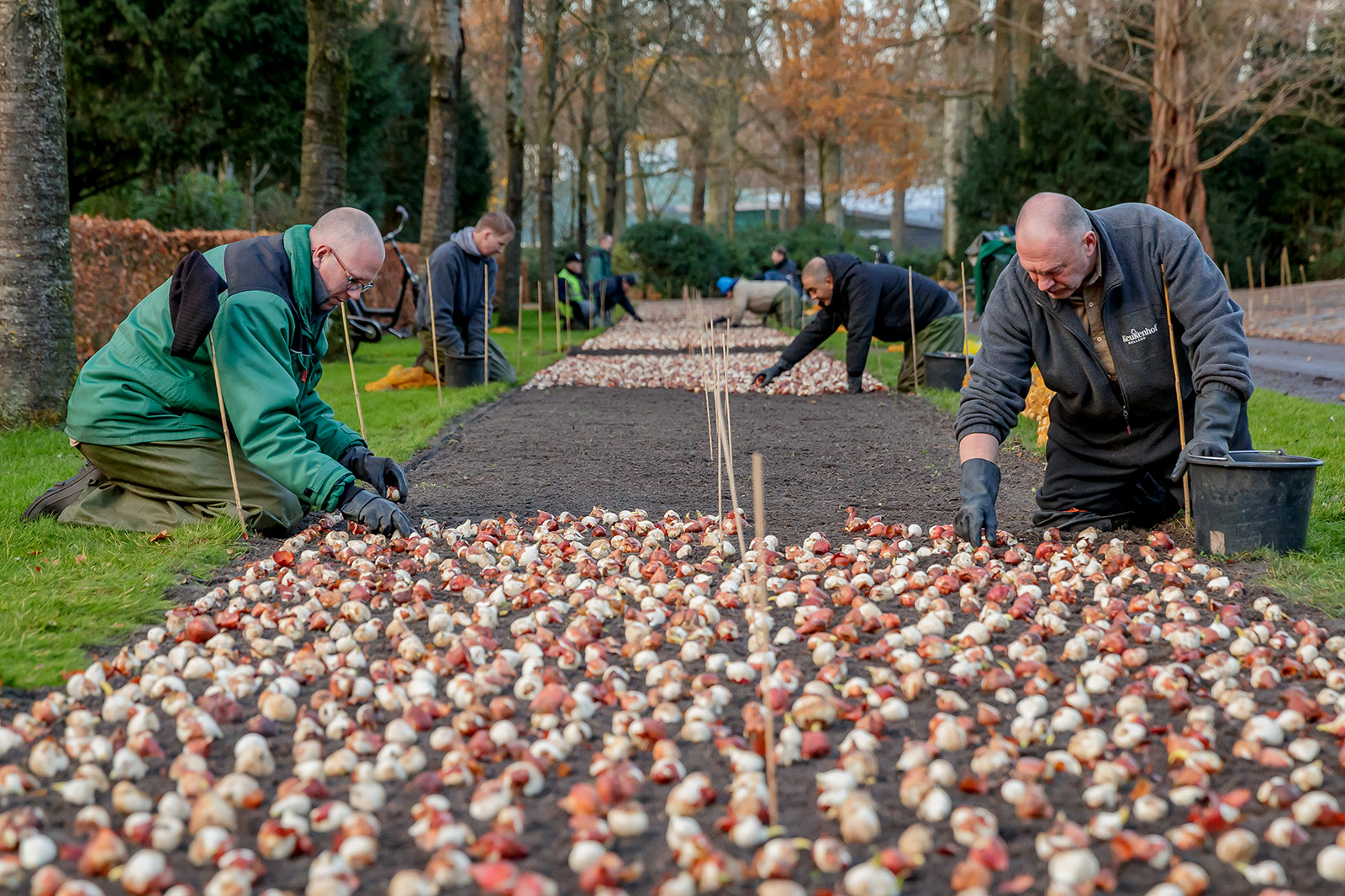
7 million flower bulbs
Every year, 7 million bulbs are planted by hand in the Keukenhof! It is exacting work because if you plant a single bulb in the wrong place, there might be one red flower in the middle of a yellow field months later…
Flower-bulb madness
It started with a single tulip bulb from Turkey, called the Tulipan or turban in English (tulband in Dutch). It may have been named after the shape of the turbans worn by Turkish men. Dutch merchants who sailed the world in the prosperous 17th century, trading spices and luxury products, brought the tulip bulb home to what was then called the Republic of the Seven United Netherlands.
The enterprising spirit and infrastructure of the Dutch enabled them to be the ones to put the tulip on the map instead of the Turks. They took the opportunity to develop the tulip trade. We already had waterways and roads for transport, and gardeners became experts at developing new varieties for their wealthy landowners. Often, it was a mystery what flower would emerge. Tulips with stripes and flames on their petals often resulted from virus infections, which was not known at the time but the result was much admired.
Tulips became all the rage in 17th century Europe,
with ladies of the French court paying 300 guilders for a tulip worn in their décolletage.
Where does the Netherlands export flowers and plants to?
International flower trade
Hans Kleijwegt, the mogul of lilies, is the real deal. When he walks through the greenhouses and is alone with his ‘girls’, he talks to them. With a smile, he adds that “they never talk back.”
Kleijwegt is a perfect example of a self-made man who became successful in the Dutch ornamental flower business. As the son of a farmer, he was supposed to take over his father’s tomato and red pepper farm but felt it took too long. To put pressure on his dad, he applied for a job at the Van den Bos flower bulb company in Honselersdijk. He didn’t expect to be hired but got the job.
He grew within the organization and turned Van den Bos into the world’s biggest lily bulb export company. Every year, the company ships 250 million bulbs. And it is not just his business instinct that is at the root of Kleijwegt’s success. The entrepreneur also studied philosophy and sociology and took masterclasses with the American self-help guru Tony Robbins in his leisure time. What drives him? “I like the international life. I have traveled to 50 countries, lived in California for five years, and run businesses in Chile and Ethiopia. After 40 years in the business, my heart still bursts when I walk through the greenhouses. A flower bulb is the beginning of a natural product that brings happiness to people all over the world. The lily innovates. For instance, we are already growing scentless varieties.”
You are looking so good. If you try hard enough, you’ll make someone very happy out there in the world.
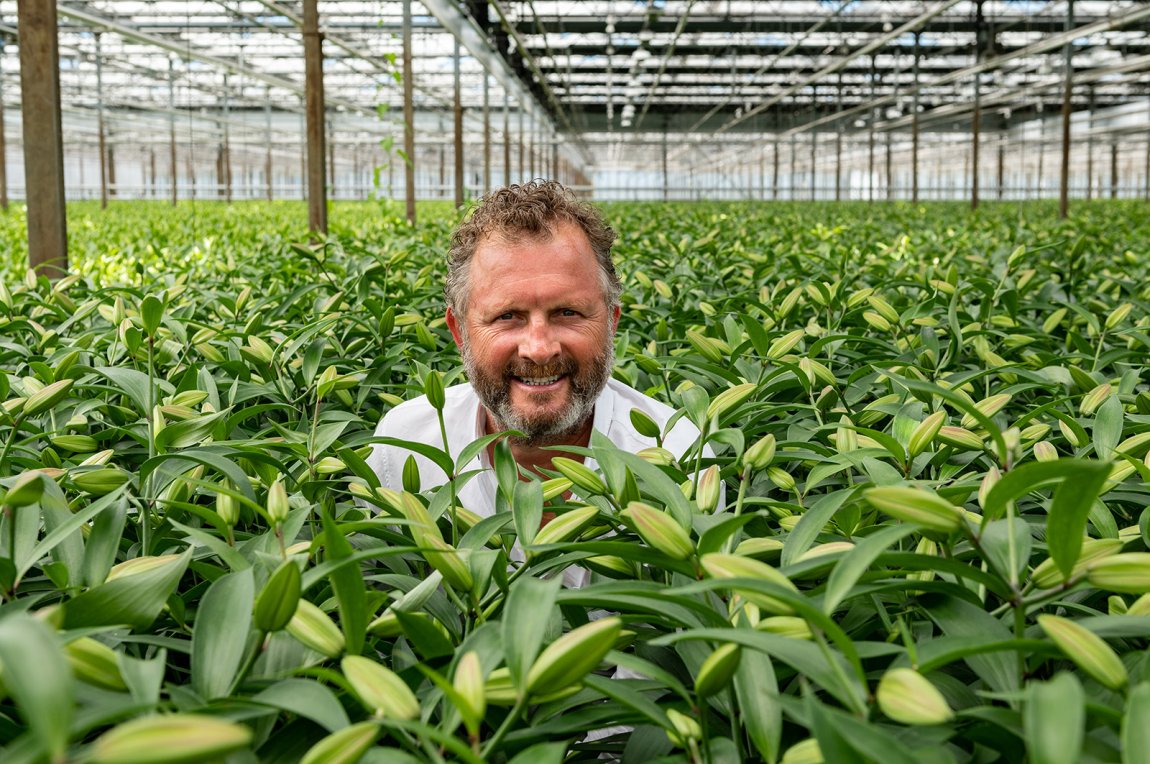
Traditionally, lilies are mainly grown in the province of North Holland but that is also shifting to other places in the Netherlands. And in Chile, where a lot of land is available and the process requires fewer chemicals.
Its scent, its budding, its blooming and its death - there is a lot of symbolism in a lily according to Kleijwegt. “During the ancient Greek and Roman times, brides wore a crown of lilies hoping for a pure and fertile life. To the older generation, however, lilies are associated with death and funerals. For younger people, lilies are a symbol of happiness and virginal love.”
When asked what makes the Netherlands the quintessential country of flowers, he doesn’t hesitate. “We invented the sharing economy before it became a trend. Here in Naaldwijk, companies are clustered close together around the auction house, the centralized trading center, of which we are all a part and where we share knowledge and experience. Perhaps our common belief in the Westland region also contributes to that sense of community. Of course, the companies are competitors, but there is also a joint interest. The Dutch economy is called the ‘polder model’ for a reason.”
That may need some explanation. The polder model is a typically Dutch term that stands for consultation. Because the Netherlands is largely below sea level, polders were flooded on a regular basis. This problem had to be solved by the community, so farmers put aside their conflicts for the greater good. Today, the polder model also symbolizes the Dutch political consultation structure in which several parties rule together and where everyone’s ideas and beliefs are taken into account. It is unique in the world.
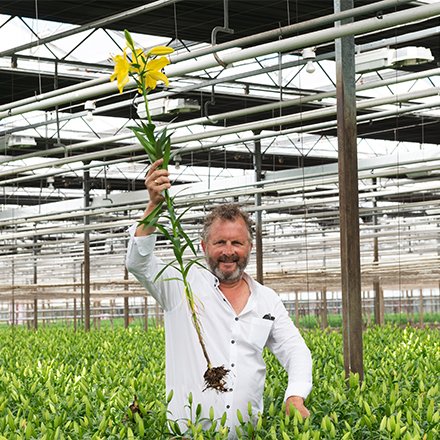
Flowers in Dutch art
Vincent van Gogh has his sunflowers, Piet Oudolf his grasses, Bas Meeuws his digital flower still lifes, Marcel Wanders his tulip and dahlia chair, Studio Drift its Meadow light installation, Ermi van Oers her Living Light plants, the photographer Elspeth Diederix her Miracle Garden, Fleurien Dingemans her Power of Flower. Google these names and you’ll get a kaleidoscope of flower impressions.
What do these people have in common? They are Dutch eccentrics with genius minds and they all love flowers. Even an absolutely non-figurative artist like Piet Mondrian (1872-1944) always painted flowers in between his abstract works. The sensational way in which they bloom, their rich symbolism, and their wealth of color are beloved in every era.
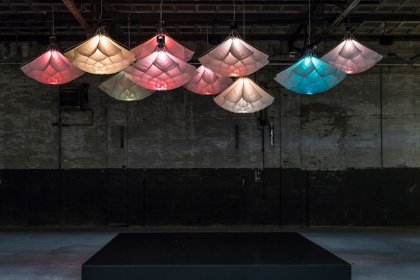
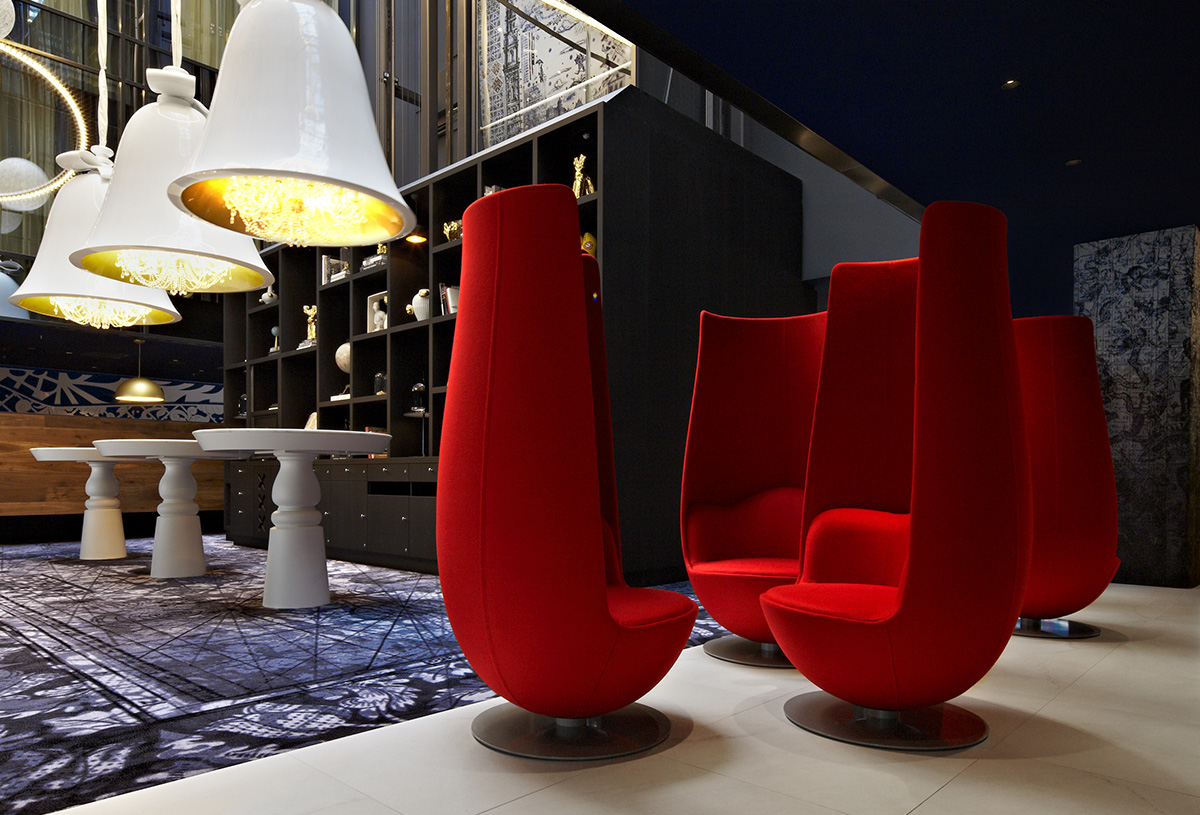
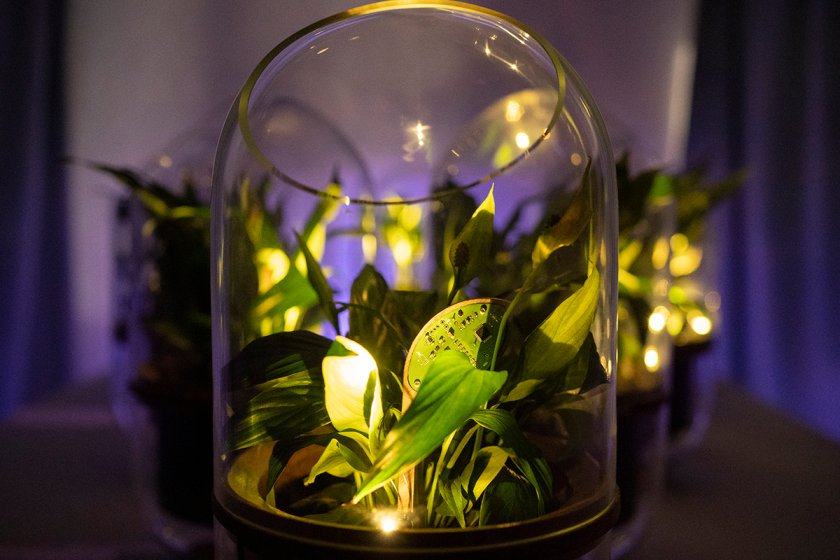
The origin of this love also roughly lies in the 17th century, which has been called the Golden Age or the first glory days of Dutch flowers. Since flowers remained fresh for only a limited amount of time and people wanted to enjoy them throughout the year, still life paintings became ever more popular. Fantasy and imagination ruled since a still life painting could contain many flowers that did not actually bloom at the same time. Slowly but surely, painting flowers became an art.
It was a popular genre from the 17th through the 19th centuries. The Dutch brothers Gerard and Cornelis van Spaendonck, for instance, traveled to Paris to paint flowers on walls, canvas and tiles at the royal court of King Louis XVI and other locations. Towards the end of the 19th century, modernist painters like Vincent van Gogh also started to paint flowers and flower still lifes. Van Gogh painted sunflowers for the first time in 1886 and kept coming back to them throughout his life. In one of the many letters he wrote to his brother Theo when he lived in France with the French artist Paul Gauguin, he said: “The sunflower belongs to me, it is my personal artistic signature.”
Cutting off his own ear two years later was an act of blind rage reflecting his mental illness. Although he was suffering at the time, we continue to enjoy his work. The Van Gogh Museum in Amsterdam has 200 paintings and 500 drawings on display and also runs a great museum shop with a range of products featuring the great painter’s work.
The Dutch are quite headstrong as a people. Take the landscape architect Piet Oudolf (75) from Hummelo, who became world-famous thanks to his grass gardens (High Line and Remembrance in New York, Chelsea Flower Show in England) but also designed the gardens around Museum Voorlinden. An atypical thinker who saw the beauty of plants and flowers after they bloomed. He gave dead plants and weeds a new lease on life. Says Oudolf: “Gardening is usually a well-organized activity; stuff must always be flowering and look 100% perfect. I let go of that idea. Many plants look good for a long time after they die off, even when they’ve passed the ‘best by’ date.”
Innovations in flower growing
Whether it concerns improvement, greenhouse building or increasing sustainability, our country is at the forefront of innovation. The Silicon Valley of the flower world. Albert Haasnoot, program manager of sustainability, knows why: “For centuries now, growers have been sharing knowledge and experience. It allowed them to specialize and become unbeatable in terms of quality and creativity.”
Growth through collaboration and sharing
Entrepreneurs collaborate with universities, including Wageningen university of agriculture, on biotechnology and molecular DNA technologies, aiming to improve the resistance of their crops to diseases and pests. Our country is also a model of sustainability where it concerns greenhouse building. Solar collectors are installed on the glass roof of greenhouses, deploying the excess energy to provide heat to residential neighborhoods in winter and to help cool the greenhouses in summer.
Geothermie Westland is another project that is garnering international attention. Hot water (140 degrees Centigrade) is pumped up from four kilometers below the Earth’s surface and the heat generated from it is used for 475 homes, 30 horticultural businesses in the Westland, and the huge halls of Royal FloraHollland in Naaldwijk.
The Dutch also do a lot of research on substituting natural compounds for chemical crop protection agents. Thrips, the much-feared white insect with ragged wings, is enemy number 1 in the greenhouses. Radical methods were used to combat it in the past, but today the juice of a specific plant is used to kill the insects instead. “It was created through collaboration with seven horticultural companies,” says Haasnoot with pride. They are even using tracking dogs in an experiment to combat an invisible fungus in Amaryllises, a very popular flower. The Dutch are true innovators and will try anything.
Lily growers are already growing lilies without pollen, so consumers don’t have to deal with yellow stains when the flowers wilt. There are also new innovations regarding the scent of lilies: lilies that don’t have a scent, or even one that smells like a Chanel perfume.
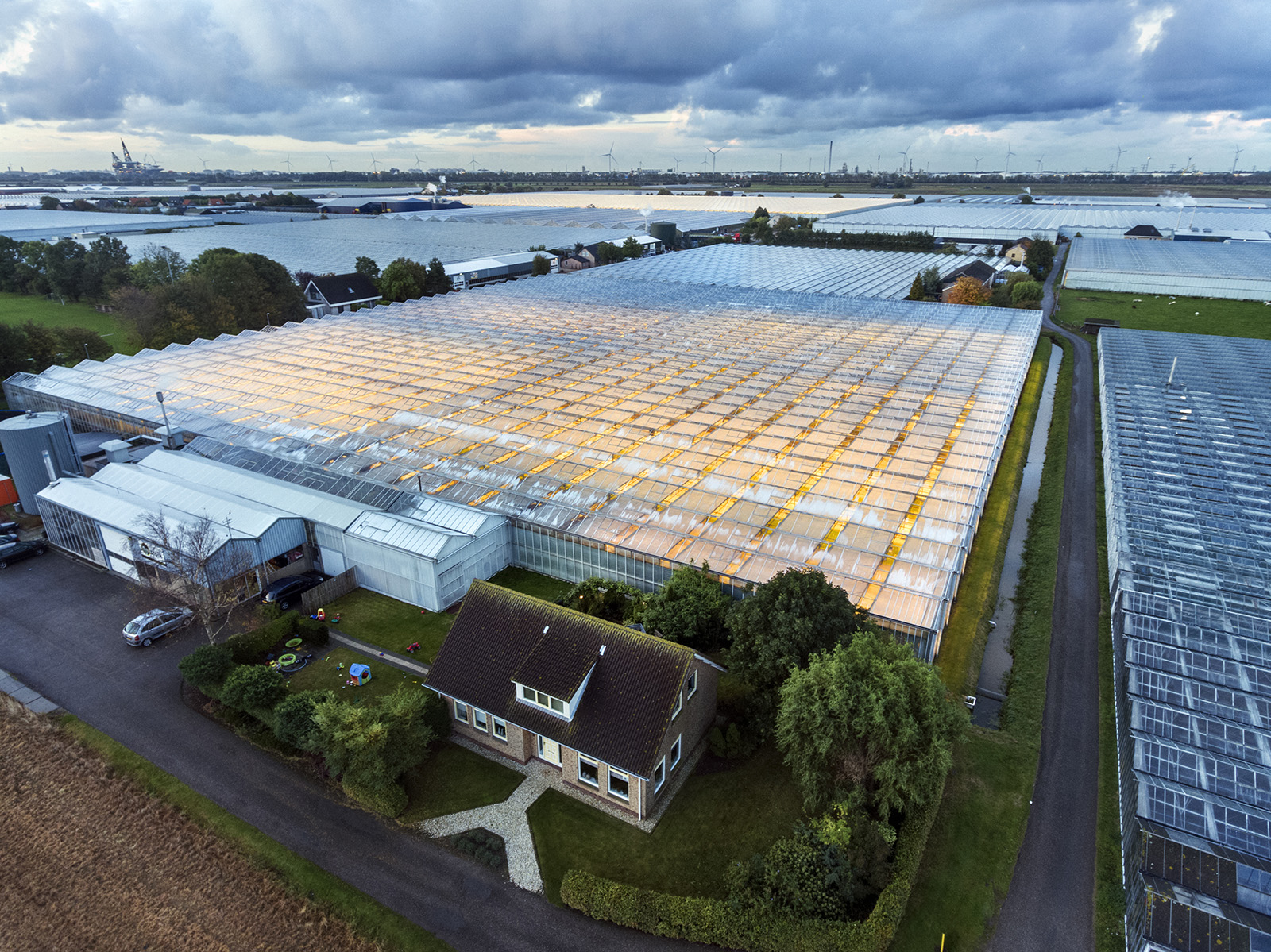
City of Glass
In the Westland (the region between The Hague and Rotterdam), so many greenhouses have been built that it is nicknamed the 'City of Glass'. The region is renowned worldwide for its innovative agricultural and horticultural practices.
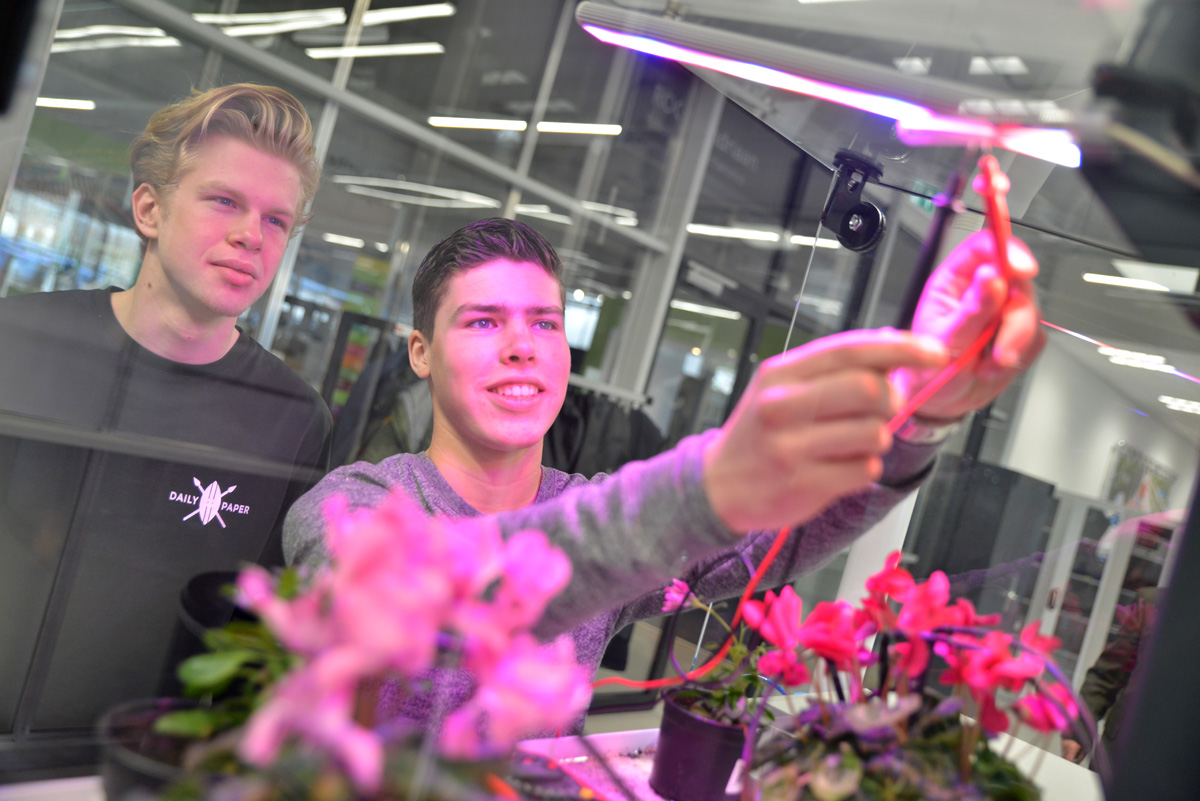
Research & innovation at the World Horti Center
The Westland is also where you will find the World Horti Center: the leading knowledge and innovation center in global horticulture. It is visited by over 40,000 professionals every year and serves as a learning environment for (international) students.

Floating above the plants
In the greenhouses, experts are continuously searching for the best way to nurture the plants quickly and carefully. On this photo, you can see how workers float above the plants to stick a support in the soil for every little plant.
Green is more than beautiful
Research increasingly shows that ‘green’ is more than just beautiful. Greenery generates oxygen, is a savior in the battle against air pollution and climate change, and makes people healthier and happier. Dutch landscape architects are building green cities around the world, and we are making huge efforts to introduce more greenery into our own cities.
Amid all the hustle and bustle of technical innovations is the more restrained approach of Loofwerk, flower growers and atelier. Mariëtte Kamphuis grows “slow flowers” organically and in the open ground at the Op Hodenpijl estate near Delft. In her arrangements and still lifes, she uses flowers reflecting the season. Daffodils in the spring, and branches, dried flowers, grasses and seed heads in winter. Says Kamphuis: “The renewed appreciation of the natural rhythm of the four seasons does not represent an impoverishment but rather a huge enrichment.”
Loving one’s trade
Jan de Boer likes being loud and to rock the boat (figuratively that is). Colleagues call him ‘the troublemaker export expert’ but he is far from crazy. He just likes to do things differently. He’ll gets ten brides to visit a tradeshow to market his bridal flowers, prefers to wear flower shoes, and doesn’t hesitate to call out politicians if he doesn’t like what they do.
Jan de Boer loves the Netherlands, the land of flowers. “There are so many different people working with flowers in so many different ways. When you add it all up, you can definitely say we’re a nation that is crazy about flowers. I see passionate people who want to promote our business all over the place. That includes well educated young people. They are the ones that give me energy. Everything changes in the world, except the love for our profession.
This is about passion, passion, passion, love, love, love.
Did the flower growers’ passion for their flowers move you? The Dutch flower story can be experienced in many places and in every season! From flowering fields in spring to flower parades and gardens in fall, but also through flowers in art, visiting the international flower auction house, or strolling through the Netherlands’ oldest botanical garden.
